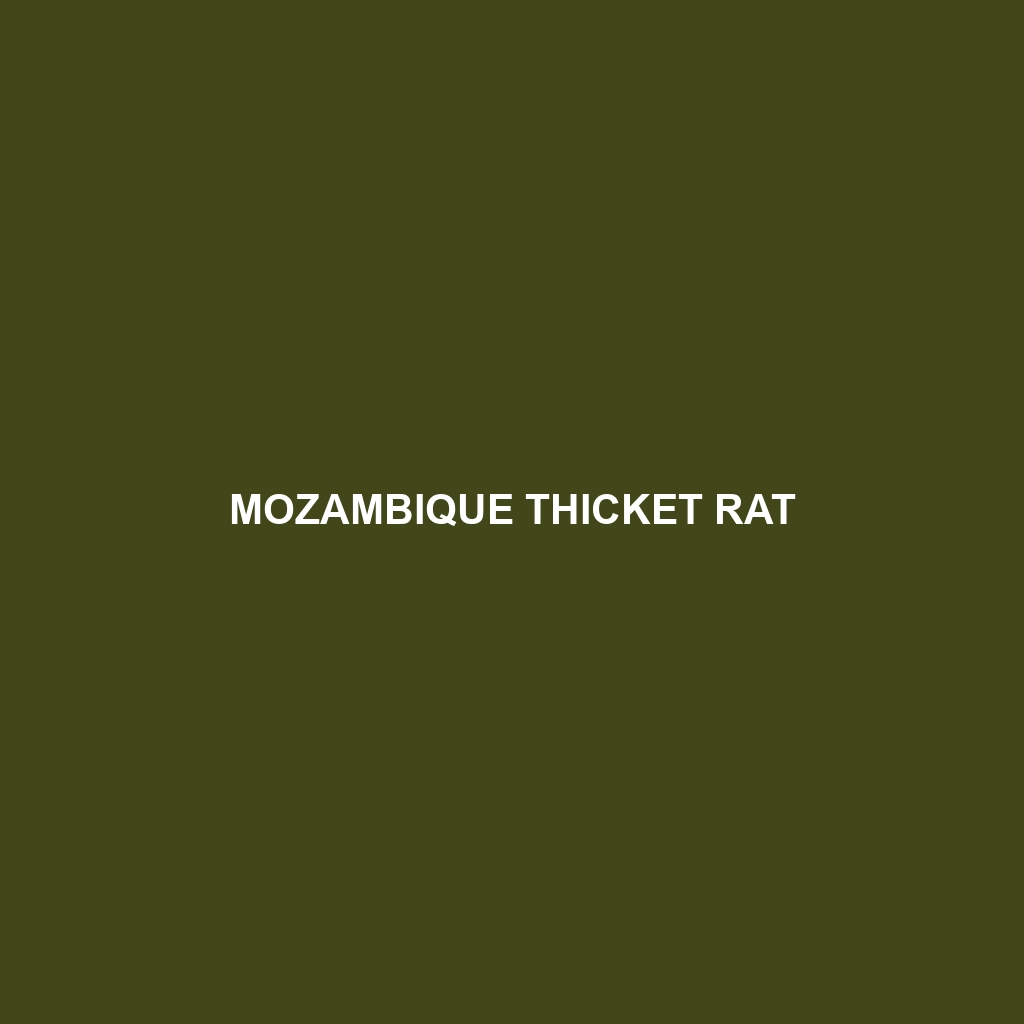Species Description: Mozambique Thicket Rat
Common Name: Mozambique Thicket Rat
Scientific Name: Grammomys zanzibaricus
Habitat: The Mozambique Thicket Rat is primarily found in the dense thickets and shrub habitats of southeastern Africa, especially in Mozambique, Zimbabwe, and parts of South Africa. This species thrives in regions with high vegetation cover, typically favoring locations near riverbanks and in moist, tropical forests, which provide ample shelter and food sources for its survival.
Physical Characteristics: The Mozambique Thicket Rat is a medium-sized rodent, measuring approximately 15 to 20 centimeters in body length, excluding a long tail that can be as long as the body itself. Its fur is generally a rich brown to reddish-brown color on the dorsum, while the underside is lighter. Distinctive features include large, rounded ears and relatively long, slender limbs. Its tail is slightly scaly and often exhibits a tuft of fur at the tip, making it easily recognizable among other rodent species.
Behavior: Mozambique Thicket Rats are primarily nocturnal, showcasing activity patterns that include foraging for food during the night. These rats display a social structure, often found in small groups or colonies. They are known for their agility and skillful climbing abilities, allowing them to navigate their arboreal habitats. They communicate through various vocalizations and scent markings, which are crucial for territory establishment and mate attraction.
Diet: The diet of the Mozambique Thicket Rat consists mainly of fruits, seeds, and green plant materials, indicating its herbivorous feeding habits. This species is particularly adept at foraging in its dense habitat, using its keen sense of smell to locate food sources. Their dietary preferences contribute to seed dispersal, playing a significant role in their ecosystem.
Reproduction: Mozambique Thicket Rats exhibit a breeding season that peaks during the warmer months, typically coinciding with the rainy season. Females can produce multiple litters per year, with each litter consisting of 3 to 5 offspring. The young are born hairless and blind, relying on the mother’s care for survival until they mature and become independent at around six weeks of age.
Conservation Status: The Mozambique Thicket Rat is currently listed as “Least Concern” by the International Union for Conservation of Nature (IUCN); however, habitat destruction and fragmentation pose potential threats to their populations. Conservation efforts focusing on habitat preservation are essential for ensuring the long-term survival of this species.
Interesting Facts: One fascinating fact about the Mozambique Thicket Rat is its ability to adapt to varying environmental conditions, making it a resilient species in the face of changing ecosystems. Additionally, it has been observed engaging in playful behaviors, often chasing one another in their natural habitat, which adds to their social dynamics.
Role in Ecosystem: The Mozambique Thicket Rat plays a crucial role in the ecosystem as both a herbivore and prey species. By feeding on seeds and fruits, they contribute to plant diversity and distribution, while also serving as an essential food source for predators like birds of prey and larger mammals in their habitat. Their activities promote a balanced ecosystem, underscoring the importance of conserving this unique species.
